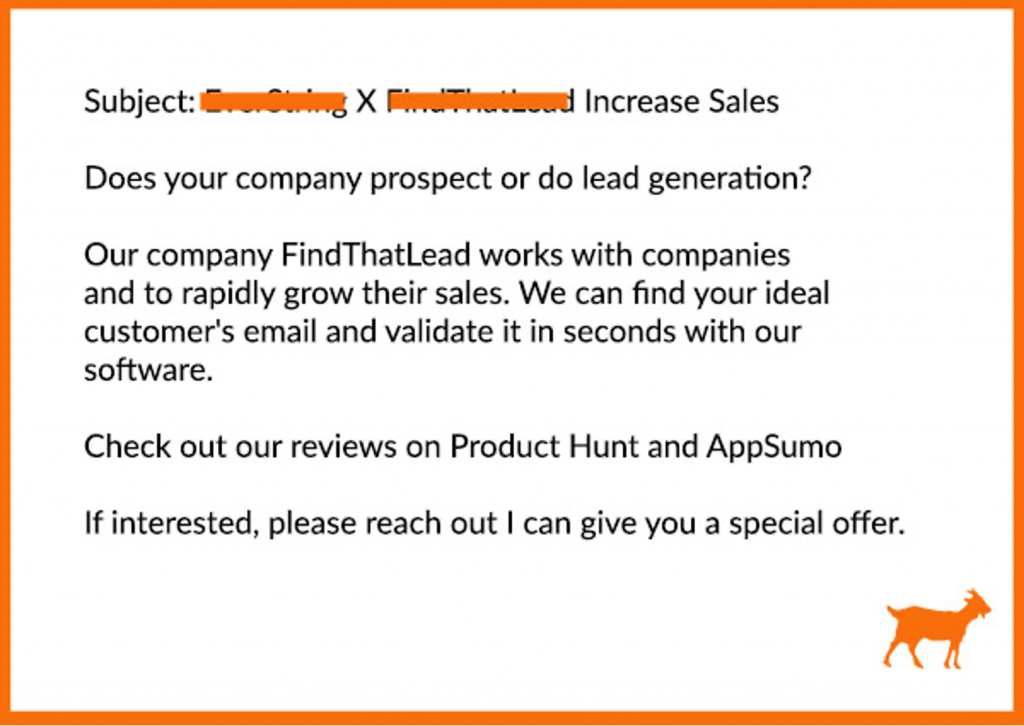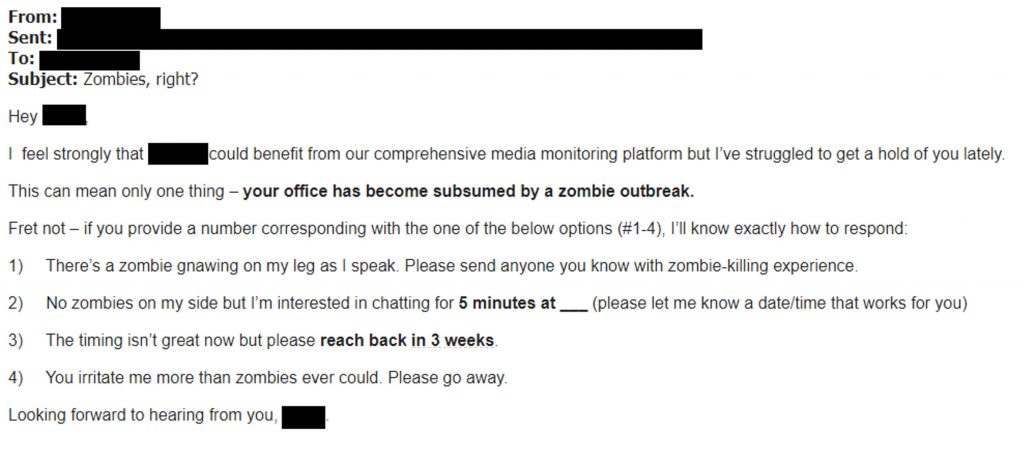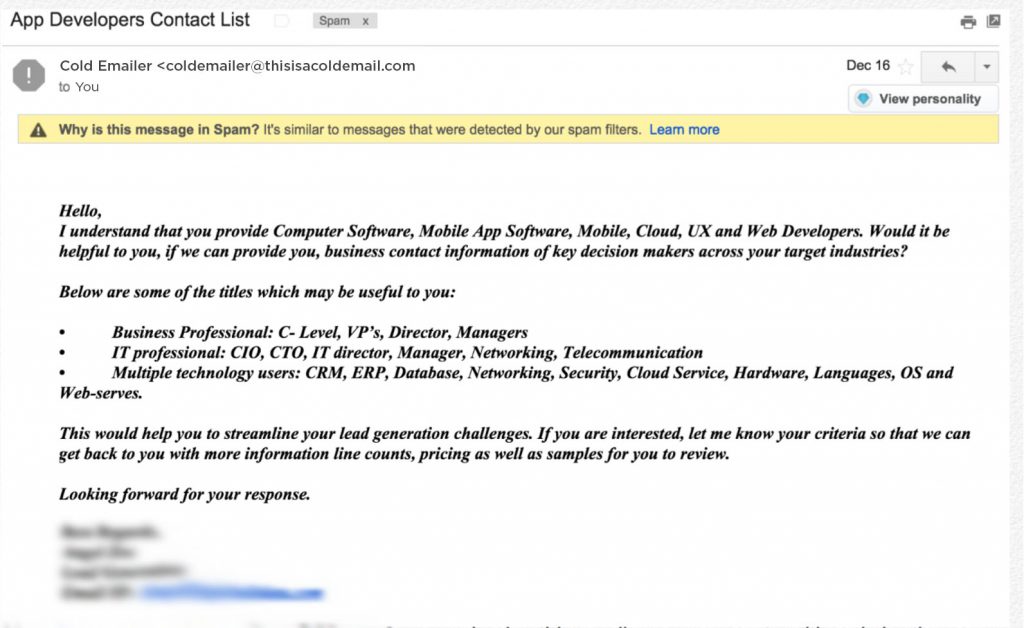- Miscellaneous
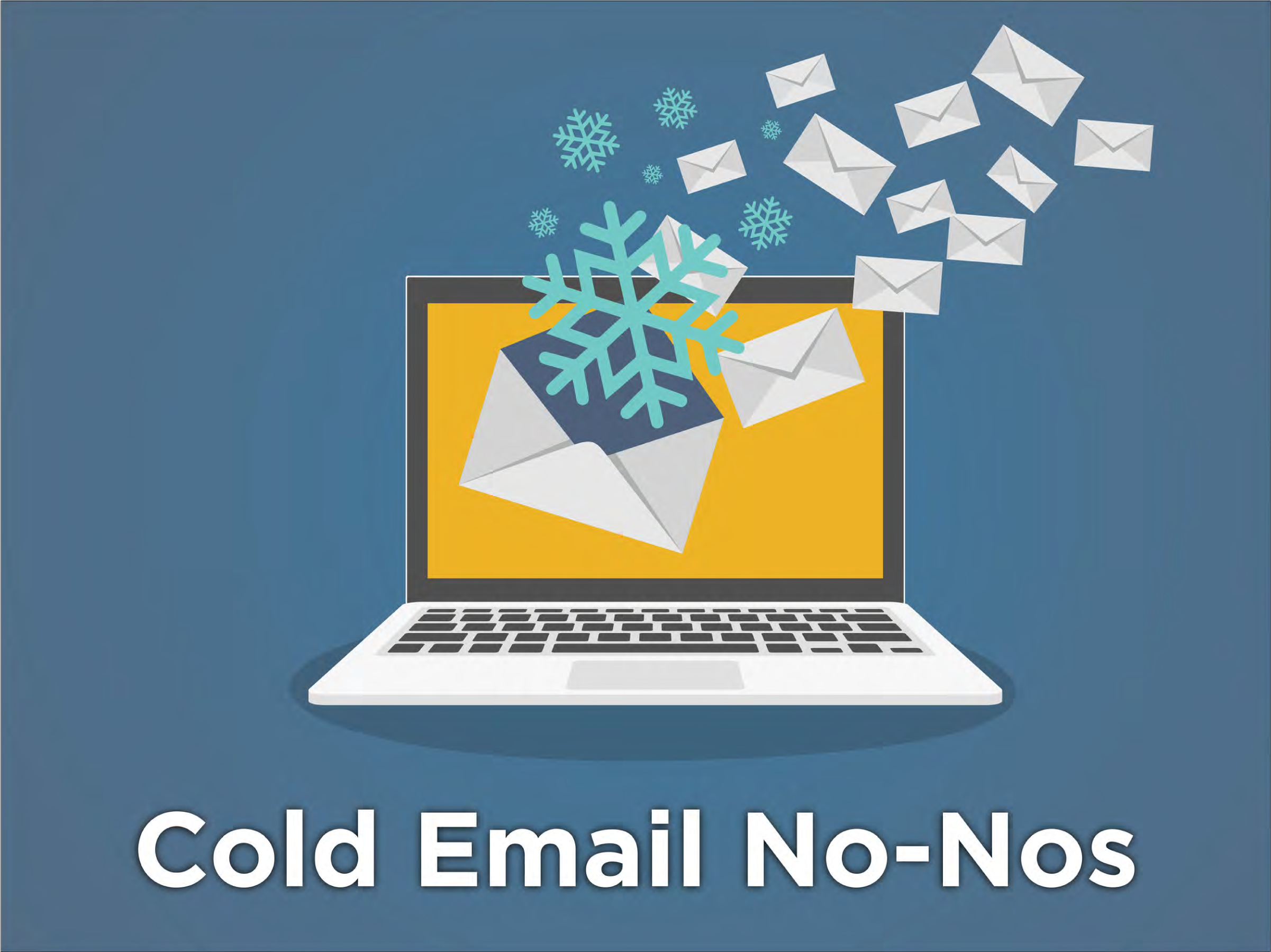
“Cold emails suck and I hate them.”
May 6, 2020, 9:49 a.m., this message from 2 Fish Co’s fearless leader dropped in Slack. What prompted it? Not one specific email but a breaking point reached after receiving dozens of cold emails a day—for years.
Why do cold emails suck so much? I think we can all agree that unsolicited email is unpleasant. But for many businesses, sending cold email is a “necessary evil,” and it can be effective. The main problem is that, oftentimes, little effort goes into crafting cold emails. And, also oftentimes, cold emails are extremely annoying.
If you must cold email, follow best practices and avoid no-nos like those to follow. Your performance will likely improve, and you’ll avoid having your emails used as examples in blogs about bad cold emails.
1) Pretending there was a previous engagement
Maybe this one should be titled “don’t lie.” Pretending there was a previous engagement when there actually wasn’t is lying.
If you receive a fair amount of cold email, you’ve undoubtedly experienced this trick to try to get you to open an email. A sender you’ve never heard of emails with a subject line like “Following up.” Maybe you see right through it, or maybe you think, “Hmmm. I might have met this person at a conference or something once.” Then you open the email and are dismayed that people still use this tactic. You vow never to do business with this liar.
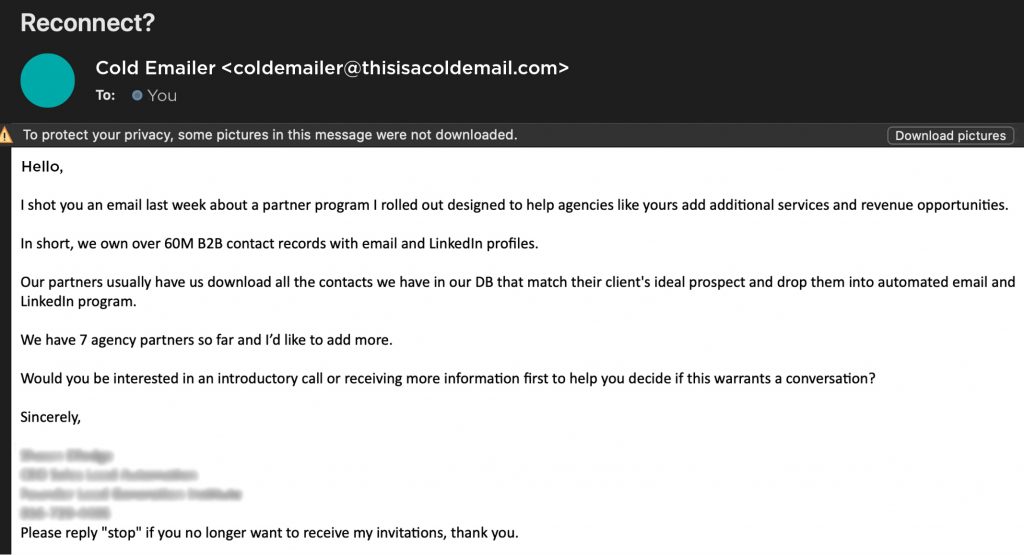
As 2 Fish Co. Digital Marketing Lead Lucas Balk put it in response to the email above: “[Name], we have never connected; therefore it is impossible to reconnect.”
2) Not doing your research
Personalization is key to cold emailing well. That doesn’t mean just addressing the email properly. It means knowing your contact and how you can provide value to them.
In the examples below, the emailers offer to help us with the same exact services we offer. Not just annoying, because the senders clearly didn’t research us enough to know what we do, but also kind of insulting.
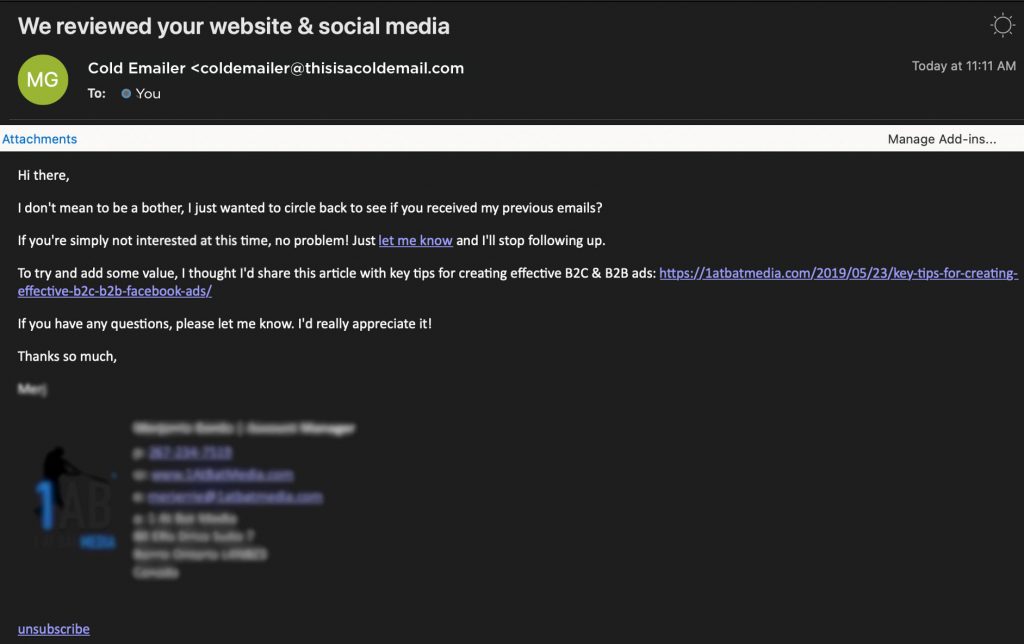
An example of not doing your research.
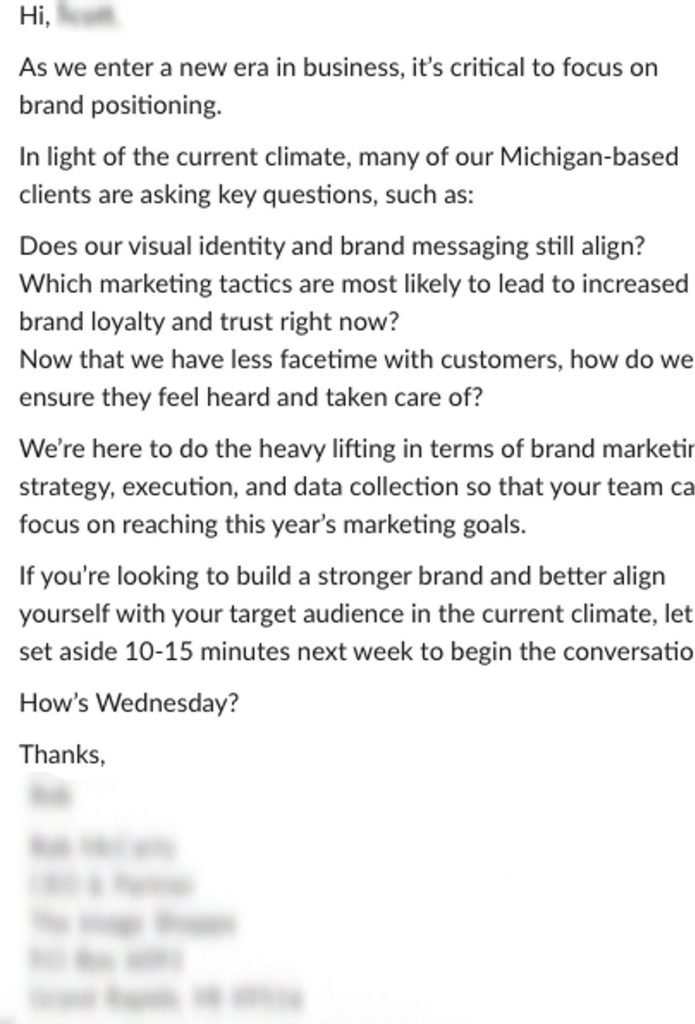
Yet another example of not doing your research.
In the next email, the sender basically admits they didn’t try. “Does your company prospect or do lead generation?” What company doesn’t?
3) Asking the recipient to do your work for you
Some cold-emailers who can’t be bothered to research the correct recipient at a company have the audacity to ask you to do it for them.
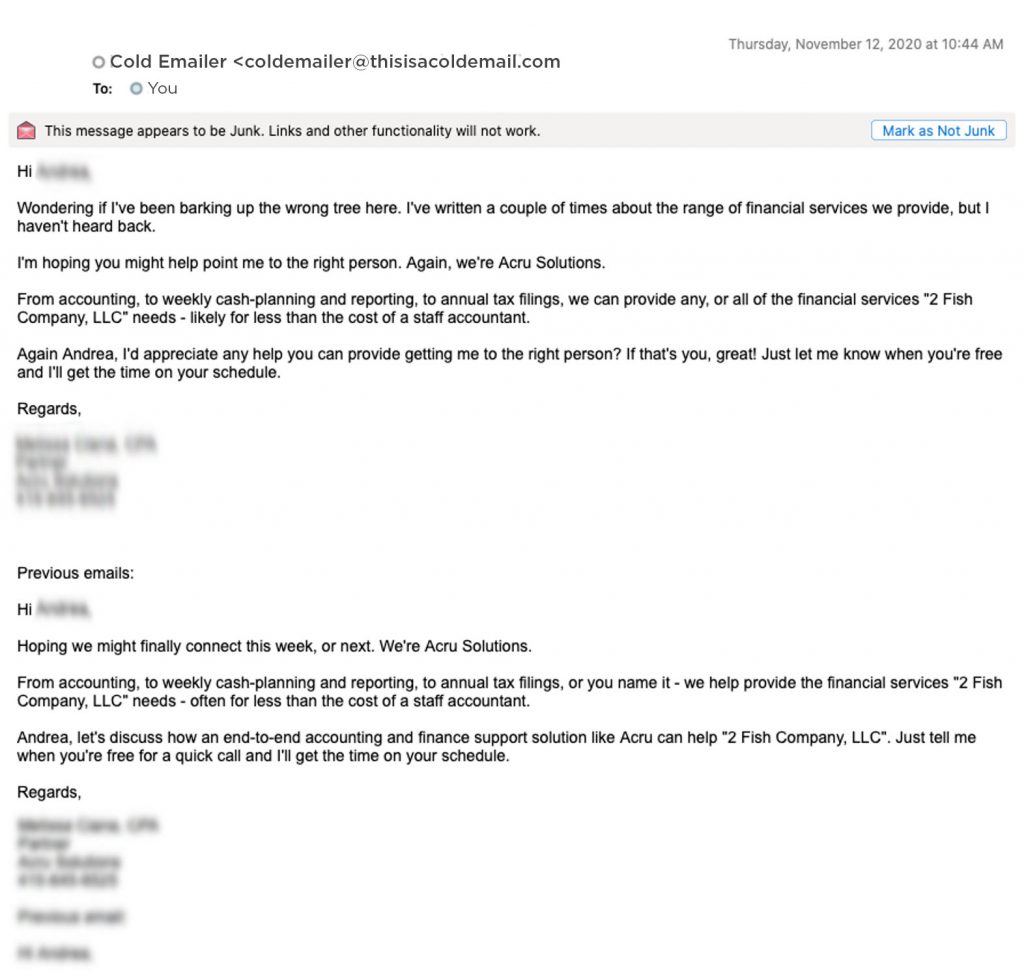
Let’s be clear: There’s plenty wrong with this email, not the least of which is copying the content from the previous two emails into it. But I want to highlight the repeated ask to connect the sender with the right person.
4) Addressing the recipient by the wrong name
Addressing your email recipient by the wrong name is a great way to show you did not do any research. Take the example below, where I was addressed by my last name. (I can confirm that the effect is even worse when your last name is very close to a common British insult.)

Phew. This was a double whammy. Got my name wrong and insulted my blog. Don’t get me started on the subject line. New band name?
5) Not having an unsubscribe option (or trying to hide it)
The CAN-SPAM act requires that your emails “tell recipients how to opt out of receiving future email from you.” This applies to all commercial messages, not just bulk mail. And IT’S THE LAW, so not complying is ILLEGAL. You’d think cold-emailers would have caught on by now. But we still occasionally receive cold emails with no opt-out option, or duplicitous (I don’t often get to use that word, so I’m taking this opportunity) tactics like trying to hide the unsubscribe link with light-colored text.
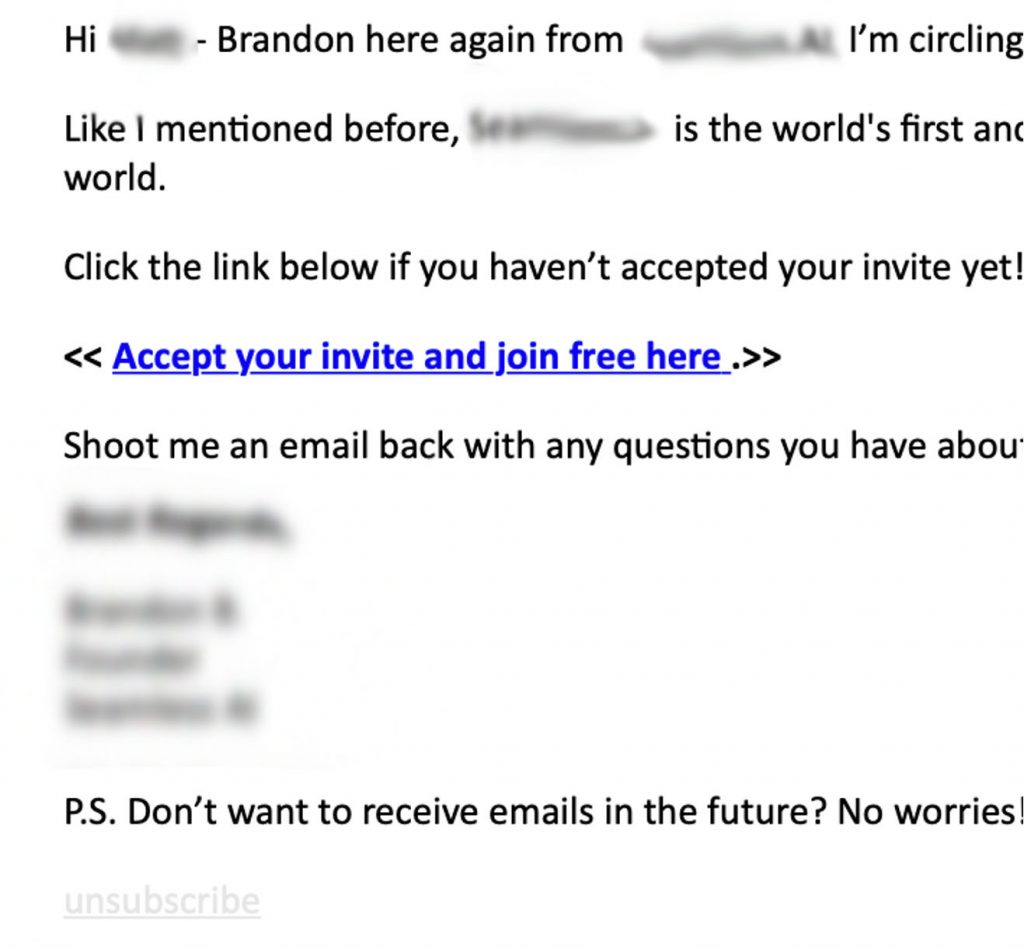
“Gotta love the barely-visible shade of gray unsubscribe,” said 2 Fish Co. Senior Project Manager Matt Kuczynski. “Because THAT’S a clear opt-out link.” No, Matt. I DON’T love it.
6) Being too informal
Keep your cold emails professional. Your prospects are not your best buds; they’re businesspeople who need to have confidence in you if they end up doing business with you.
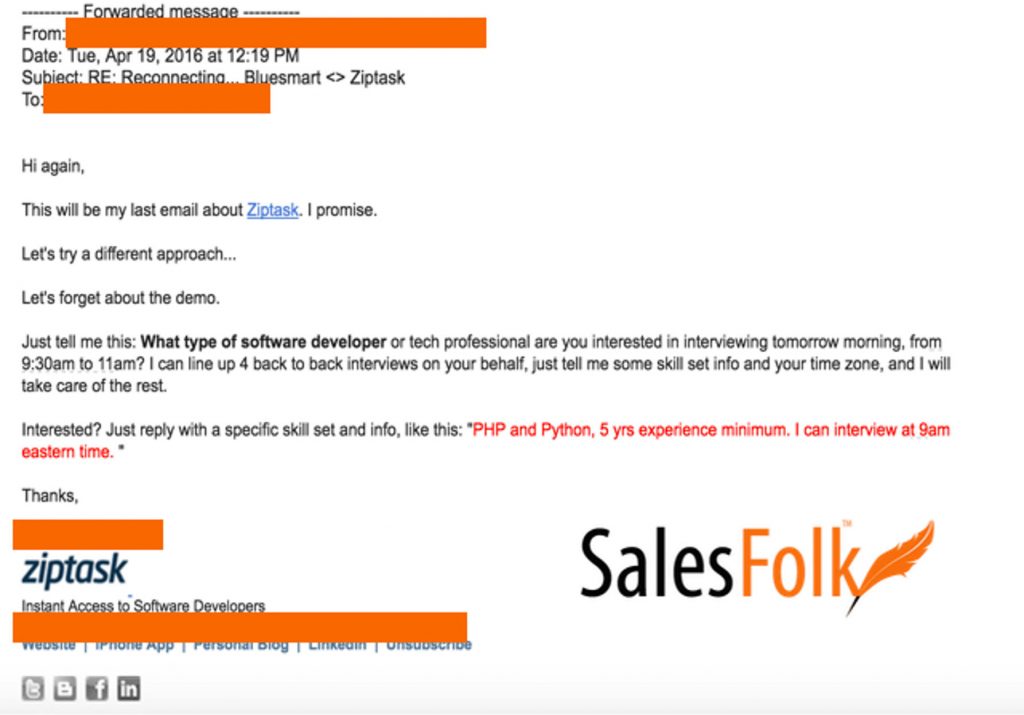
The tone of this email is generally obnoxious. Informal and aggressive. ? Source: https://salesfolk.com/blog/presumptuous-emails-turn-offs/
That doesn’t mean your emails have to be stiff and boring. Think of how you can write emails that don’t mirror the “typical” cold email scripts in tone but are still appropriately respectful.
7) Being too gimmicky
We totally get that you need to set your cold emails apart from the pack. But you can do that by providing value and just saying what you need to say.
To be fair, this zombie nonsense might work on some people. But we suggest that if you’re reaching out to talk business, start with a business-like tone.
8) Failing to proof
We all make proofing mistakes. It happens. But it is not a good first impression, especially if it’s something that should have been easy to catch by running it by a teammate or sending a test email to yourself.

How the heck are ya, {FirstName}? Make sure your emails with autofill components are set up correctly.
9) Using a script
There’s nothing wrong with having a general script to follow for your cold emails, especially if it’s a proven one. But it shouldn’t be a plug-and-play, “insert company name here”-type script. Rather, have the talking points you know you need to hit and then craft a personalized email around them.

Whoops. Not personalized, and they forgot to paste the company name into the script. Source: https://www.writingrevolt.com/worst-cold-emails/
10) Not taking the hint
Maybe one follow-up email is called for. But if your message is ignored more than once, take the hint. Don’t send cold email after cold email when a recipient has shown no interest. That’s a good way to get blocked.
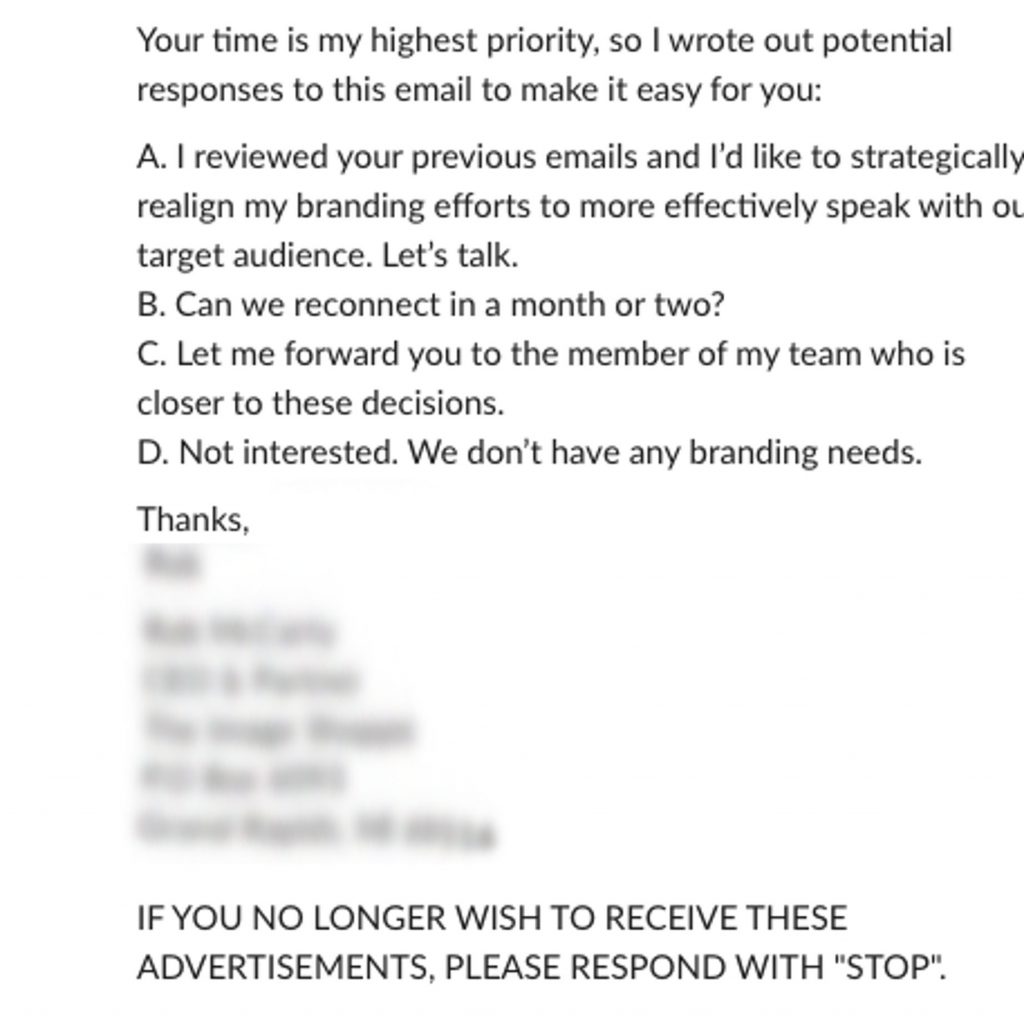
If you have to resort to this to try to get a response, you’re doing it wrong.

Also, don’t say you won’t send any more emails and then do so anyway. Source: https://www.nutshell.com/blog/worst-cold-emails-ever/
11) Getting wacky with formatting
Using crazy fonts, colors, tons of images, etc., is an excellent tactic if you want your email to get delivered right to the junk folder. Even if it somehow sneaks through into the inbox, it still looks like spam. Keep it simple.
Poor formatting is also a no-no. Who wants to read an email that looks like this?
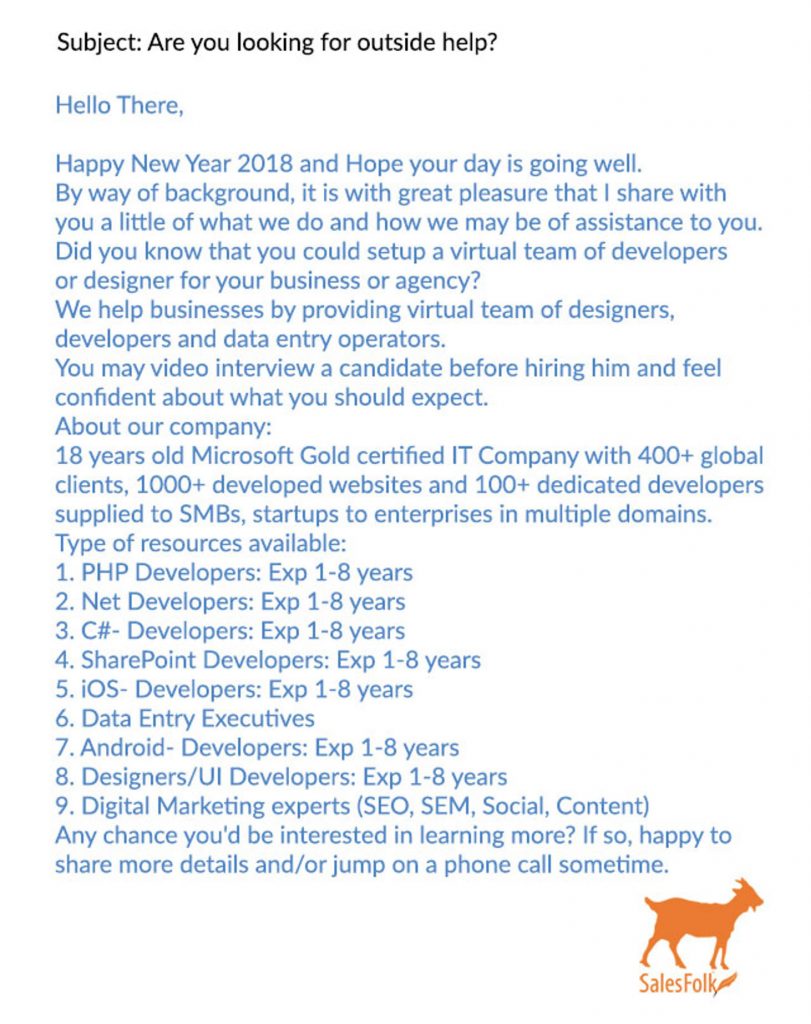
Source: https://salesfolk.com/blog/sales-emails-look-like-youre-definitely-losing-potential-customers/
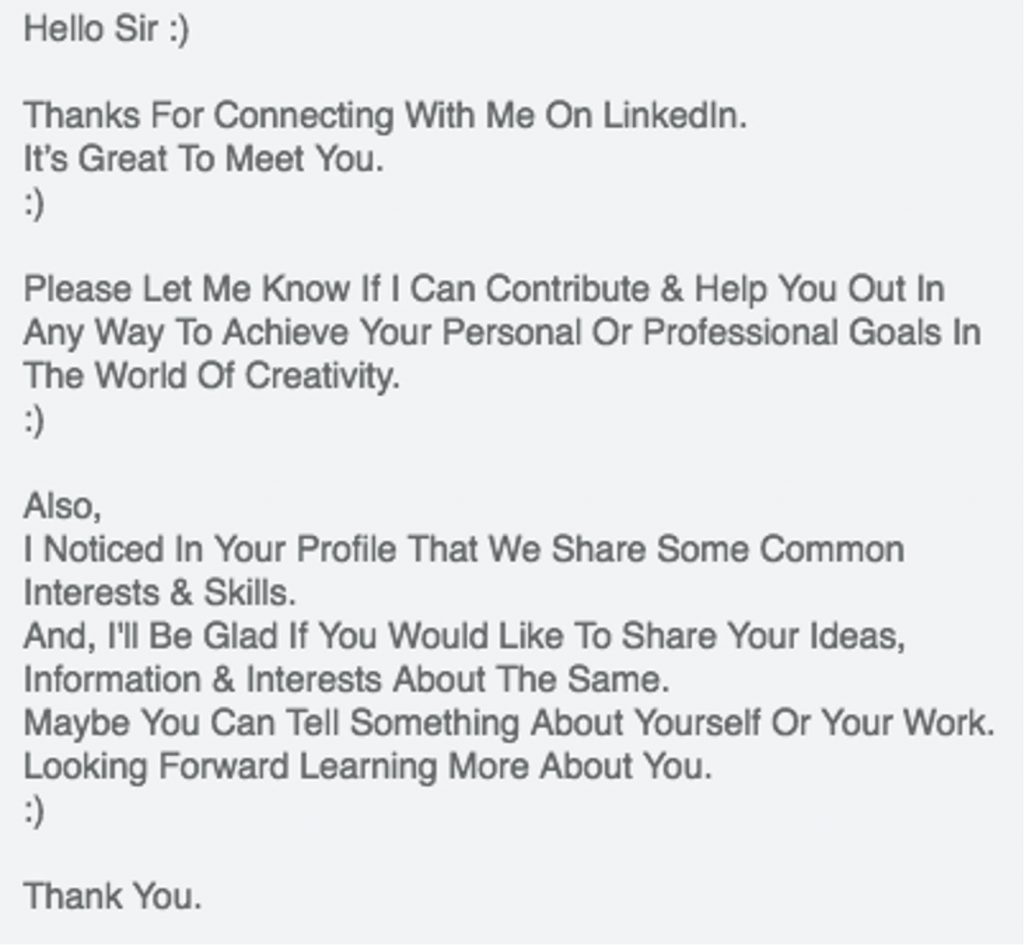
My thoughts on this email? : ) (It’s not a smile; it’s a grimace.) Source: https://findthat.email/resources/three-of-the-most-hilarious-and-worst-outbound-messages-weve-got/
12) Making it all about you
Lastly, if you’re going into every email with the focus on what the relationship can do for you, you’re doing it wrong. Obviously, you’re not cold emailing for the heck of it. The general point is to get business. But if you don’t provide value to your recipients, no one will care about you and your email.
Don’t hard sell right off the bat. Do the research to know how you can be of service to the recipient. And us prospect-focused language. Show how you can make them successful, elevate them to hero-status in their company. Don’t just talk about you and your services.

Classic hard sell. DELETE. Source: https://www.saleswingsapp.com/email-marketing/3-bad-cold-emails-and-how-to-fix-them/
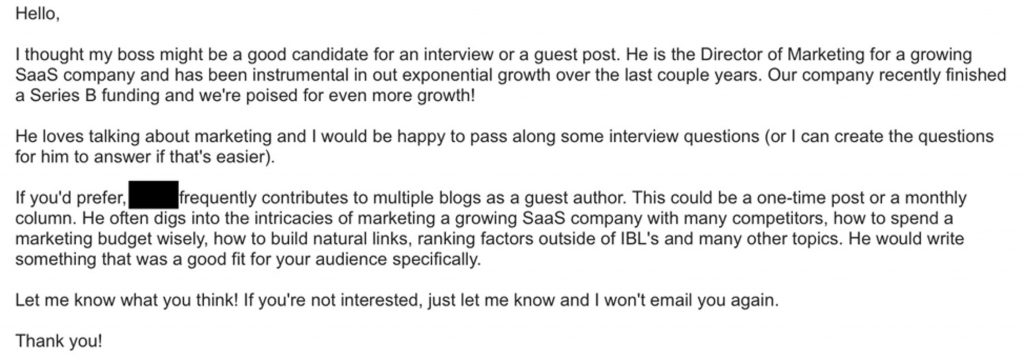
Wow, your boss sounds great. BYE. Source: https://www.writingrevolt.com/worst-cold-emails/
Conclusion
Look, we’re not trying to humiliate or cut down cold emailers in this blog. We know sales is hard work, and we also know that getting good at cold emailing takes trial and error. We’ve all made mistakes. We hope that these bad cold email tactic examples help you revolutionize your cold emailing (and stay out of my “Bad Cold Emails” folder)!
Got questions about how to improve your cold emails or want to share additional bad cold email practices you think we should highlight? Feel free to get in touch.
SHARE IT!
-
Miscellaneous
Who Is The Ultimate 2 Fish Co. Client?
-
Miscellaneous
Data Privacy in Marketing: What You Need to Know (and Why It Matters)

